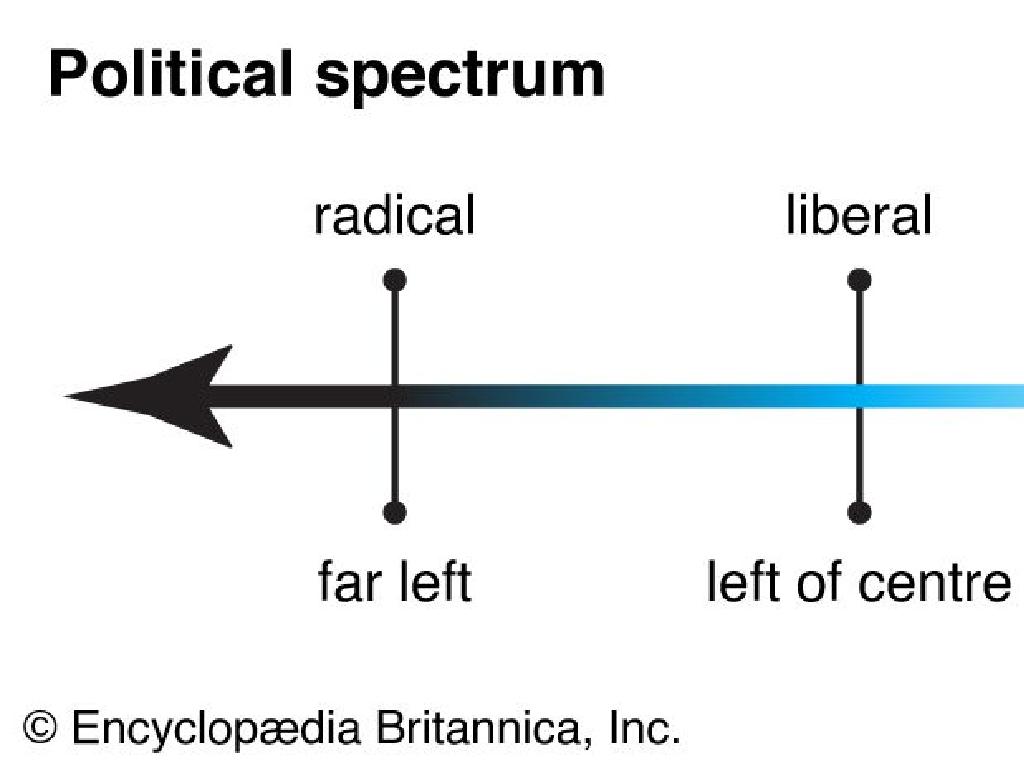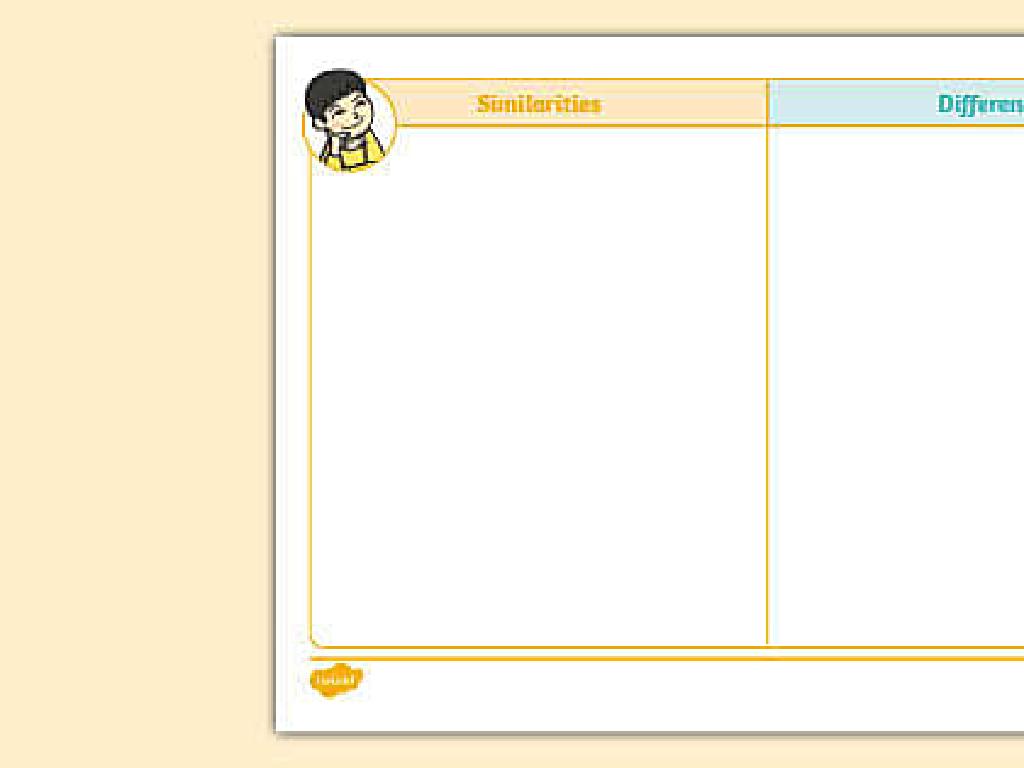Area And Perimeter: Word Problems
Subject: Math
Grade: Eighth grade
Topic: Perimeter And Area
Please LOG IN to download the presentation. Access is available to registered users only.
View More Content
Exploring Area and Perimeter
– Understanding area and perimeter
– Area measures space within; perimeter measures the boundary.
– Definitions with formulas
– Area: Length x Width; Perimeter: Sum of all sides.
– Real-world applications
– Use in construction, farming, interior design, etc.
– Solving practical problems
– Calculate space for gardens or frames around pictures.
|
This slide introduces the concepts of area and perimeter, which are fundamental in understanding the space around us. Begin by explaining that area is the measure of space inside a shape, while perimeter is the total distance around the shape. Provide the formulas for calculating area (length x width) and perimeter (sum of all sides) for rectangles as a starting point. Discuss how these concepts apply to real-life scenarios such as planning a construction project, determining the amount of paint needed for a room, or figuring out how much fencing is required for a farm. Encourage students to think of other examples where they might need to calculate area and perimeter. Conclude by emphasizing the importance of these measurements in solving practical problems and inform students that they will be practicing with word problems to apply what they’ve learned.
Perimeter: The Outline of Shapes
– Perimeter: total distance around
– Calculating perimeter: squares, rectangles, triangles
– For squares, P=4a. Rectangles, P=2(l+w). Triangles, P=a+b+c
– Practice Problem: desk perimeter
– Use a ruler to measure each side of your desk
– Measure and add all sides
– Ensure measurements are accurate; then perform addition
|
This slide introduces the concept of perimeter as the total distance around a shape, which is a fundamental aspect of geometry. Emphasize that the perimeter can be calculated for various shapes by adding the lengths of all sides. For squares, the perimeter is four times one side (P=4a), for rectangles, it’s twice the length plus twice the width (P=2(l+w)), and for triangles, it’s the sum of all three sides (P=a+b+c). The practice problem encourages students to apply this knowledge by measuring their desk, which helps in understanding real-world applications of perimeter. Provide detailed guidelines for the teacher to assist students in measuring and calculating the perimeter accurately, and suggest alternative objects to measure if desks are not uniform.
Area: The Space Inside
– Area measures space within a shape
– Formulas for squares, rectangles, triangles
– Square: A^2, Rectangle: L*W, Triangle: (B*H)/2
– Example: Classroom floor area
– If a classroom is 10m by 8m, its area is 10m*8m = 80m^2
– Practice with real-world problems
|
This slide introduces the concept of area as a measure of the space inside a two-dimensional shape. It’s crucial to emphasize that area is measured in square units. Provide the formulas for calculating the area of squares, rectangles, and triangles, which are the most basic shapes students will encounter. Use an example relevant to students, such as calculating the area of their classroom floor, to illustrate the practical application of the concept. Encourage students to think of other real-world examples where they might need to calculate area. In the next class, provide a variety of word problems for students to practice applying these formulas to reinforce their understanding.
Solving Perimeter Word Problems
– Comprehend the problem’s context
– List known and unknown values
– Identify given measurements and what you need to find
– Apply perimeter formulas
– Use P=2(l+w) for rectangles or add all sides for irregular shapes
– Solve and check your answer
– Always review your solution for possible errors
|
This slide is aimed at guiding students through the process of solving perimeter word problems. Start by ensuring students understand the context and what the problem is asking. Emphasize the importance of identifying all the given information and what needs to be found. Teach them to apply the appropriate perimeter formulas based on the shape in question. For a rectangle, use P=2(l+w), where l is length and w is width. If the shape is irregular, they should add the length of all sides. After calculating, students should check their answers to confirm they make sense in the context of the problem. Use the example of a garden project to illustrate how these steps are applied in a real-world scenario. Encourage students to practice with additional problems to reinforce the concept.
Solving Area Word Problems
– Understand the problem
– Read carefully, identify shapes and measurements
– Steps to find area
– 1. Determine shape, 2. Apply formula, 3. Calculate area
– Example: Carpet area
– Room length 12ft, width 8ft, Area = length x width
– Practice with exercises
|
This slide is aimed at teaching students how to approach and solve area-related word problems. Start by breaking down the problem: read the question carefully, identify the shape involved, and note down all given measurements. Next, outline the steps to solve for area: determine the shape (rectangle, square, circle, etc.), apply the appropriate area formula, and perform the calculation. Use an example problem, such as finding the area of a room for a new carpet, to illustrate the process. Provide the room’s dimensions and show how to apply the formula for the area of a rectangle. Encourage students to practice with additional exercises to reinforce the concept.
Combining Area & Perimeter: Practical Applications
– Understanding when both are needed
– Area & perimeter are often used together in planning spaces
– Solving dual-constraint problems
– Use algebra to solve for unknown dimensions
– Class Activity: Park Design Project
– Design a park within specific area & perimeter limits
– Applying concepts to real-world scenarios
|
This slide introduces the concept of using area and perimeter in tandem, which is common in real-world applications such as construction and design. Students will learn to identify when both measurements are necessary and how to approach problems that require an understanding of both. The class activity involves designing a park layout with specific area and perimeter constraints, encouraging students to apply their knowledge creatively. For the activity, provide different scenarios with varying area and perimeter requirements to cater to different student groups. This will help them understand the practical implications of these mathematical concepts.
Class Activity: Area & Perimeter Word Problems
– Pair up and solve word problems
– Create a real-life area/perimeter problem
– Think of scenarios like room renovation or fencing a garden
– Present your problem to the class
– Engage in a group-solving session
– Collaborate to find solutions and explain your reasoning
|
This activity is designed to promote collaborative learning and application of area and perimeter concepts in real-life scenarios. Students should be encouraged to think creatively and come up with practical word problems. Provide guidance on structuring a word problem, including specifying dimensions and the type of area or perimeter to be calculated. Possible activities: 1) Designing a layout for a pet’s play area, 2) Calculating the amount of paint needed for a mural, 3) Fencing a vegetable garden, 4) Planning a new floor tiling. The teacher should circulate the room, offering assistance and ensuring that each pair is on task. After solving the provided problems, each pair will present their unique problem to the class, fostering a peer-learning environment.






